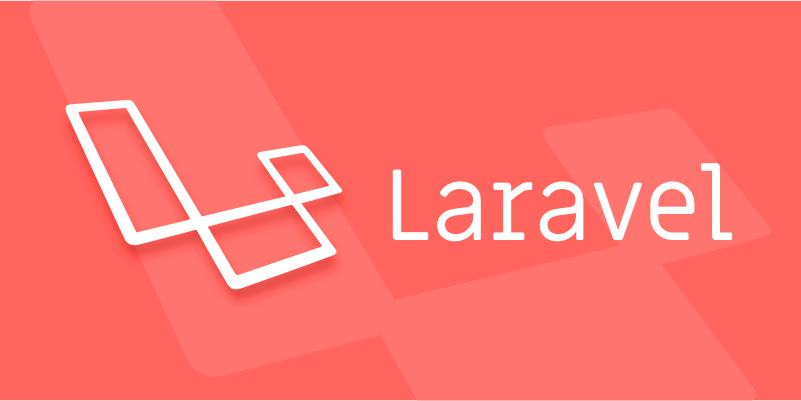Handling exceptions and logging errors in a Laravel application
Jul 02, 2025 pm 03:24 PMThe core methods for handling exceptions and recording errors in Laravel applications include: 1. Use the App\Exceptions\Handler class to centrally manage unhandled exceptions, and record or notify exception information through the report() method, such as sending Slack notifications; 2. Use Monolog to configure the log system, set log levels and output methods in config/logging.php, and enable error and above level logs in production environment. At the same time, you can manually record detailed exception information in report() in combination with the context; 3. Customize the render() method to return a unified JSON format error response, improving the collaboration efficiency of the front and back end of the API. These steps ensure that exceptions are effectively caught, recorded and feedback, enhancing the maintainability and robustness of the application.

The core of handling exceptions and logging errors in Laravel applications is to understand the framework's exception handling mechanism and effectively track problems in combination with the log system. Laravel provides a built-in exception handling class App\Exceptions\Handler where we can centrally manage various exception responses and retain key information through logs.

Set global exception handling
Laravel's exception handling logic is mainly concentrated in App\Exceptions\Handler class. You can catch all unhandled exceptions here and decide how to return the response to the user or client.

- All exceptions will enter
report()andrender()methods:-
report(): used to record exceptions or send notifications -
render(): used to return an HTTP response (such as JSON or page)
-
For example, if you want to send a Slack notification when a specific exception occurs, you can add a judgment in report() :
use Illuminate\Support\Facades\Notification;
use App\Notifications\ExceptionHappened;
public function report(Throwable $exception)
{
if ($this-> shouldReport($exception)) {
Notification::route('slack', config('services.slack.exception_webhook'))
->notify(new ExceptionHappened($exception));
}
parent::report($exception);
}This method allows you to obtain error information as soon as possible without interrupting the program flow.

Key Errors Using Logging
Laravel uses Monolog to process logs by default, and the configuration file is located in config/logging.php . You can set different log levels (debug, info, error, etc.) and output methods (single, daily, syslog, papertrail, etc.) according to different environments.
It is recommended that you enable at least error and above logging in production environments, so that you can capture problems that really affect the functionality.
- Recommended practices:
- Log manually during exception handling:
Log::error($exception) - Record more detailed log content based on context information, such as user ID, request path, etc.
- Regularly clean or archive log files to avoid taking up too much disk space
- Log manually during exception handling:
For example, record the details in Handler class:
use Illuminate\Support\Facades\Log;
public function report(Throwable $exception)
{
if (app()->environment('production') && $this-> shouldReport($exception)) {
Log::error("Unhandled exception: " . $exception->getMessage(), [
'user_id' => optional(auth()->user())->id,
'url' => request()->fullUrl(),
'trace' => $exception->getTraceAsString()
]);
}
parent::report($exception);
}Such logging can help you locate the source of the problem faster.
Customize exception response format
If you are developing an API, the unified error response format is very friendly to front-end debugging. You can implement a custom structure by overriding render() method.
For example, change the default HTML error page to JSON format and return:
use Illuminate\Validation\ValidationException;
use Symfony\Component\HttpFoundation\Response;
public function render($request, Throwable $exception): Response
{
// Special handling verification exception if ($exception instanceof ValidationException) {
return response()->json([
'status' => 'error',
'message' => 'Validation failed.',
'errors' => $exception->errors()
], $exception->status);
}
// Other exceptions are unified format return response()->json([
'status' => 'error',
'message' => $exception->getMessage()
], 500);
}This can make front-end and back-end collaboration smoother and reduce communication costs.
Basically that's it. Exception handling and logging seem simple, but if you are neglected, it will affect the inspection efficiency at the least, and at the worst, it will cause service crashes and difficult to recover. Rationally configuring Handler and Logging settings is one of the basic tasks to ensure application robustness.
The above is the detailed content of Handling exceptions and logging errors in a Laravel application. For more information, please follow other related articles on the PHP Chinese website!

Hot AI Tools

Undress AI Tool
Undress images for free

Undresser.AI Undress
AI-powered app for creating realistic nude photos

AI Clothes Remover
Online AI tool for removing clothes from photos.

Clothoff.io
AI clothes remover

Video Face Swap
Swap faces in any video effortlessly with our completely free AI face swap tool!

Hot Article

Hot Tools

Notepad++7.3.1
Easy-to-use and free code editor

SublimeText3 Chinese version
Chinese version, very easy to use

Zend Studio 13.0.1
Powerful PHP integrated development environment

Dreamweaver CS6
Visual web development tools

SublimeText3 Mac version
God-level code editing software (SublimeText3)

Hot Topics
 How to test Laravel API interface?
May 22, 2025 pm 09:45 PM
How to test Laravel API interface?
May 22, 2025 pm 09:45 PM
Efficient methods for testing Laravel API interfaces include: 1) using Laravel's own testing framework and third-party tools such as Postman or Insomnia; 2) writing unit tests, functional tests and integration tests; 3) emulating a real request environment and managing database status. Through these steps, the stability and functional integrity of the API can be ensured.
 How to customize Laravel's user authentication logic?
May 22, 2025 pm 09:36 PM
How to customize Laravel's user authentication logic?
May 22, 2025 pm 09:36 PM
Custom Laravel user authentication logic can be implemented through the following steps: 1. Add additional verification conditions when logging in, such as mailbox verification. 2. Create a custom Guard class and expand the authentication process. Custom authentication logic requires a deep understanding of Laravel's authentication system and pay attention to security, performance and maintenance.
 How to create Laravel package (Package) development?
May 29, 2025 pm 09:12 PM
How to create Laravel package (Package) development?
May 29, 2025 pm 09:12 PM
The steps to create a package in Laravel include: 1) Understanding the advantages of packages, such as modularity and reuse; 2) following Laravel naming and structural specifications; 3) creating a service provider using artisan command; 4) publishing configuration files correctly; 5) managing version control and publishing to Packagist; 6) performing rigorous testing; 7) writing detailed documentation; 8) ensuring compatibility with different Laravel versions.
 Laravel integration with social media login (OAuth)
May 22, 2025 pm 09:27 PM
Laravel integration with social media login (OAuth)
May 22, 2025 pm 09:27 PM
Integrating social media login in the Laravel framework can be achieved by using the LaravelSocialite package. 1. Install the Socialite package: use composerrequirelaravel/socialite. 2. Configure the service provider and alias: add relevant configuration in config/app.php. 3. Set API credentials: Configure social media API credentials in .env and config/services.php. 4. Write controller method: Add redirection and callback methods to handle social media login process. 5. Handle FAQs: Ensure user uniqueness, data synchronization, security and error handling. 6. Optimization practice:
 How to implement password reset function in Laravel?
May 22, 2025 pm 09:42 PM
How to implement password reset function in Laravel?
May 22, 2025 pm 09:42 PM
Implementing password reset function in Laravel requires the following steps: 1. Configure the email service and set relevant parameters in the .env file; 2. Define password reset routes in routes/web.php; 3. Customize email templates; 4. Pay attention to email sending problems and the validity period of tokens, and adjust the configuration if necessary; 5. Consider security to prevent brute-force attacks; 6. After the password reset is successful, force the user to log out of other devices.
 Common security threats and protection measures for Laravel applications
May 22, 2025 pm 09:33 PM
Common security threats and protection measures for Laravel applications
May 22, 2025 pm 09:33 PM
Common security threats in Laravel applications include SQL injection, cross-site scripting attacks (XSS), cross-site request forgery (CSRF), and file upload vulnerabilities. Protection measures include: 1. Use EloquentORM and QueryBuilder for parameterized queries to avoid SQL injection. 2. Verify and filter user input to ensure the security of output and prevent XSS attacks. 3. Set CSRF tokens in forms and AJAX requests to protect the application from CSRF attacks. 4. Strictly verify and process file uploads to ensure file security. 5. Regular code audits and security tests are carried out to discover and fix potential security vulnerabilities.
 What is Middleware in Laravel? How to use it?
May 29, 2025 pm 09:27 PM
What is Middleware in Laravel? How to use it?
May 29, 2025 pm 09:27 PM
Middleware is a filtering mechanism in Laravel that is used to intercept and process HTTP requests. Use steps: 1. Create middleware: Use the command "phpartisanmake:middlewareCheckRole". 2. Define processing logic: Write specific logic in the generated file. 3. Register middleware: Add middleware in Kernel.php. 4. Use middleware: Apply middleware in routing definition.
 Laravel Page Cache Policy
May 29, 2025 pm 09:15 PM
Laravel Page Cache Policy
May 29, 2025 pm 09:15 PM
Laravel's page caching strategy can significantly improve website performance. 1) Use cache helper functions to implement page caching, such as the Cache::remember method. 2) Select the appropriate cache backend, such as Redis. 3) Pay attention to data consistency issues, and you can use fine-grained caches or event listeners to clear the cache. 4) Further optimization is combined with routing cache, view cache and cache tags. By rationally applying these strategies, website performance can be effectively improved.






